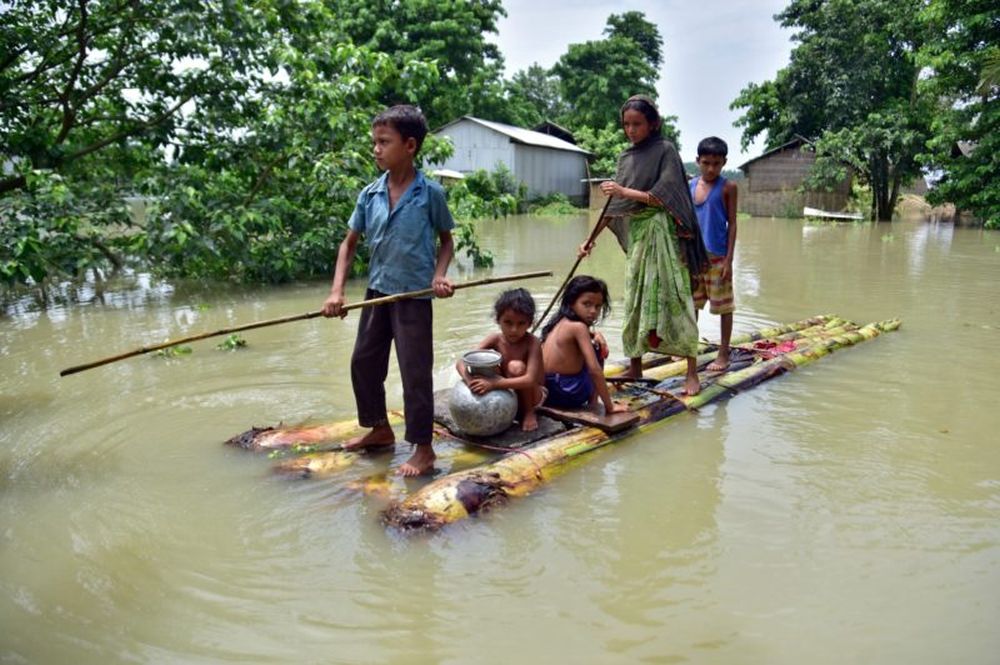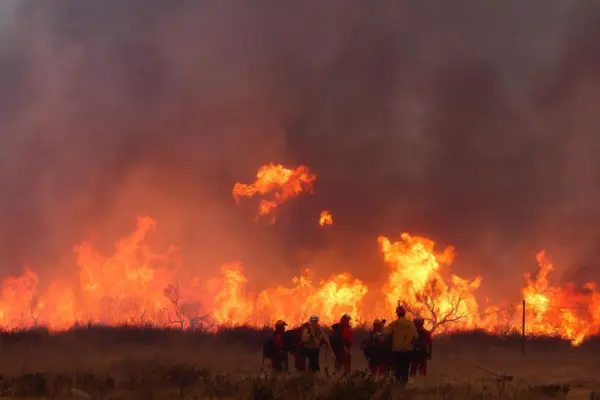A Billion Children at Extreme Risk Because Of Climate Crisis, Says UNICEF
Countries with a high risk of the climate crisis are impacting around half of the world’s 2.2 billion children, says a report from United Nations Children’s Fund (UNICEF). Around 33 countries including four South Asian countries were classified as extremely high-risk countries for the approximately 1 billion children living in one of these regions of the world.
According to the UNICEF’s Children Climate Risk Index (CCRI) people living in Pakistan, Bangladesh, Afghanistan and India – especially children are at extreme high-risk of the impacts of the ongoing climate crisis, with a ranking of 14, 15, 15 and 26 respectively.
Climate crisis like Droughts, floods, air pollution, river erosion, and more such impending issues are adversely affecting children in South Asian countries.

Image: Reuters
Children are the ones who will be most impacted by this crisis and the ones who will suffer the most from its consequences, there have been many millions of people, especially young people, mobilized. We need to raise awareness and we need to create a mass mobilization of people from all over the world. That is the only way that we can win, and we are going to take action and treat the crises.
Swedish activist, Greta Thunberg said.
A human body’s requirement for water and food is more in children than in adults. Therefore, they are more prone to temperature changes, diseases and unfortunate carbon emissions that are gripping the planet in its hold.
Despite being classified as extremely high-risk countries, the 33 countries produce only 9 percent of global carbon dioxide (CO2), while the other 10 countries emit around 70 percent of CO2.
Also Read: With Increasing Flooding Episodes Millions Will Suffer More in the Future
Apparently, India is the only country, which was recorded for both, high CO2 emissions and was on the borderline high risk. Alongside, it is responsible for more than 7% of global CO2 emissions but it has a large population of more than 1.3 billion people, and its per capita emissions are only 1.8 metric tons.
Meanwhile, children in Iceland, Luxembourg and New Zealand were at the least risk. These countries have small populations, but, per capita, Iceland and New Zealand emit more than 6 metric tons of the world’s emissions, while in Luxembourg, it’s more than 15 -on par with Americans, Canadians, Saudis and Australians.
George Laryea-Adjei, UNICEF’s Regional Director for South Asia said;
Together, climate change and the COVID-19 pandemic have created an alarming crisis for South Asian children. The time to act is now – if we invest in water, healthcare and education, we can protect their futures from the impacts of a changing climate and degrading environment.
The agency claimed that it relied on governments around the world to take more action towards the ominous climate change problem and to include young people in all climate negotiations and decisions at every level. These include the ones at November’s COP26 climate talks in Glasgow.
Via: CNN


